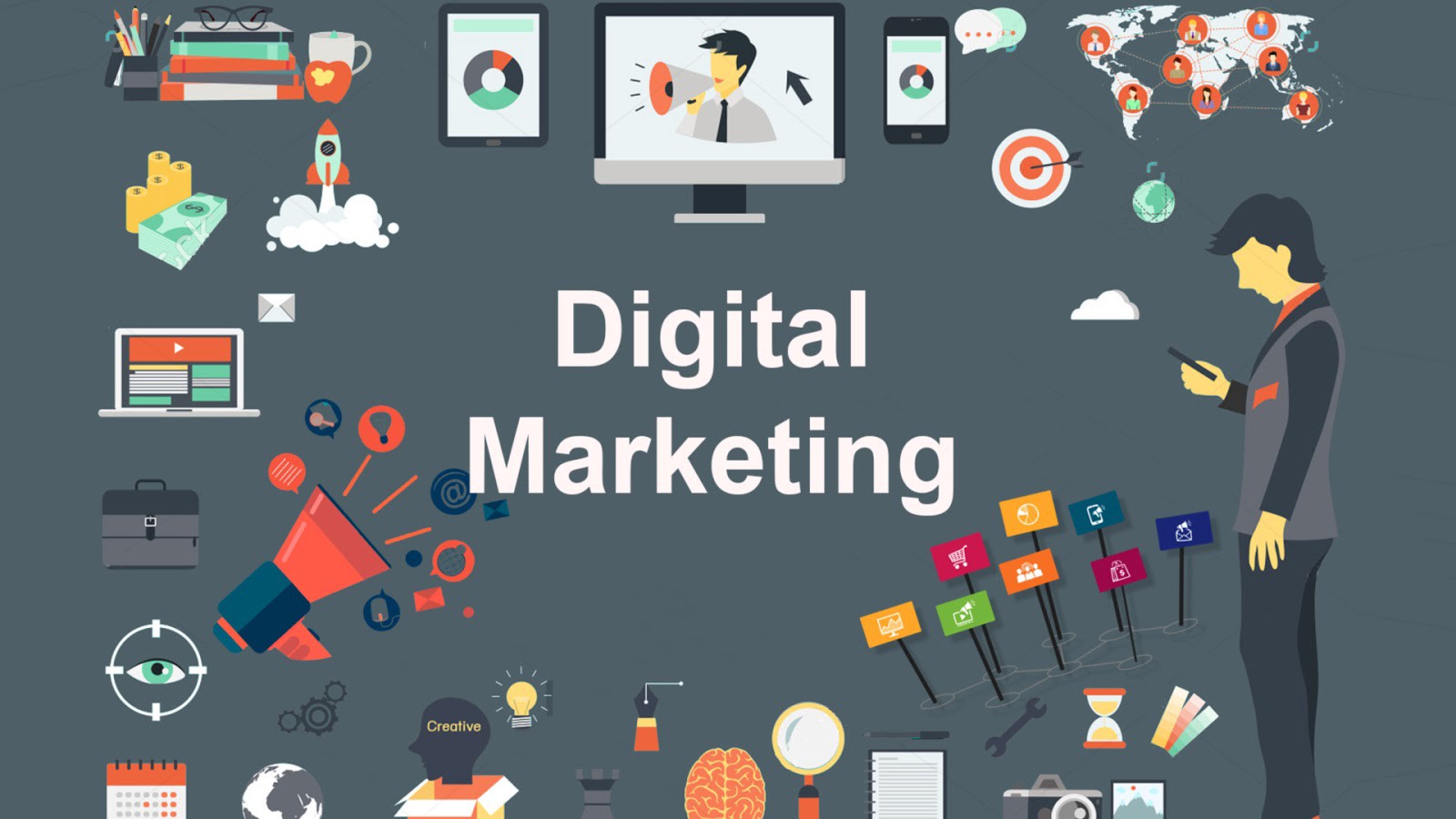Specialist Insights right into Digital Marketing Lockhart for Small Businesses
Specialist Insights right into Digital Marketing Lockhart for Small Businesses
Blog Article
Transform Your Organization With Data-Driven Digital Advertising
In today's rapidly evolving market, leveraging data-driven digital advertising and marketing has come to be vital for businesses intending to enhance their competitive side. By using analytics to get insights right into consumer behavior, companies can customize their advertising techniques for optimal influence. This method not just fosters deeper interaction yet likewise boosts brand loyalty through personalized experiences. As we explore the intricacies of executing reliable data-driven approaches, it is important to take into consideration just how these approaches can essentially improve your advertising and marketing efforts and influence your bottom line. What essential components should you focus on to ensure success?
Understanding Data-Driven Marketing
Data-driven advertising and marketing is significantly identified as a crucial method for services intending to enhance their advertising and marketing performance. This technique depends on the organized collection, evaluation, and application of data to inform advertising and marketing approaches and decisions. By leveraging different data resources, including customer demographics, behavior patterns, and market fads, organizations can create targeted projects that resonate with specific target markets.
At its core, data-driven advertising entails integrating analytics into the marketing process. This enables for real-time understandings into campaign performance, allowing marketers to make educated adjustments and enhance their strategies. By recognizing consumer preferences and engagement degrees, organizations can craft individualized messaging that is much more most likely to transform potential customers into dedicated customers.
Furthermore, data-driven marketing cultivates a society of responsibility within organizations. As services welcome data-driven advertising and marketing, they position themselves to respond effectively to altering market characteristics and customer expectations.
Advantages of Information Analytics

Among the key benefits is the capacity for individualized marketing. Data analytics enables organizations to section their target market efficiently, tailoring messages and uses that resonate with details teams. This level of customization not only improves interaction prices but also fosters brand loyalty.
In addition, data analytics helps with real-time decision-making. Online marketers can keep an eye on project efficiency continually, readjusting methods based on prompt feedback and results. This agility brings about optimized resource appropriation and enhanced return on investment.
In addition, predictive analytics empowers services to prepare for future fads and customer requirements, enabling proactive methods instead than responsive steps. This foresight can be a substantial competitive advantage in today's dynamic market landscape.
Secret Tools and Technologies

One of the vital modern technologies is Customer Relationship Monitoring (CRM) software, which allows services to manage customer communications and assess information throughout the customer lifecycle. Furthermore, marketing automation systems improve repeated tasks, promoting customized interaction and lead nurturing.

Data visualization devices, such as Tableau and Google Data Studio, help experts analyze complicated data sets, presenting insights in a conveniently absorbable layout. Analytics platforms like Google Analytics provide very useful metrics on site traffic and user behavior, making it possible for marketing professionals to optimize their methods - Digital Marketing Lockhart.
Social network analytics devices, such as Hootsuite and Sprout Social, provide insights right into audience involvement and web content efficiency throughout various systems. A/B testing tools, like Optimizely, allow marketing professionals to experiment with different approaches, making certain that data-driven choices are constantly refined. By leveraging these technologies, services can foster a data-centric society, causing extra efficient electronic advertising projects.
Implementing Efficient Approaches
To efficiently implement efficient strategies in electronic advertising, companies have to first align their purposes with workable insights derived from data analytics. This placement enables businesses to customize their marketing initiatives, guaranteeing they reverberate with target market. By leveraging data from numerous channels, such as social media, e-mail advertising and marketing, and internet site analytics, business can determine patterns, preferences, and behaviors that notify their approach.
Following, it is essential to prioritize customer segmentation. By categorizing their audience based upon demographics, passions, and purchasing habits, companies can develop tailored advertising and marketing campaigns that drive involvement and conversion. Automation tools can facilitate this process, allowing marketing professionals to supply prompt, appropriate content to certain sections.
Additionally, accepting a dexterous marketing approach can enhance responsiveness to market modifications and consumer comments. Frequently evaluating project performance and making data-driven adjustments can optimize outcomes and resource allocation.
Finally, cultivating a society of cooperation redirected here between advertising and marketing, sales, and information analytics teams is essential. This multidisciplinary strategy ensures that understandings are properly shared and incorporated into wider service methods, ultimately driving sustained growth in a competitive landscape.
Determining Success and ROI
Exactly how can organizations efficiently determine success and return on financial investment (ROI) in digital marketing? The answer depends on developing clear goals and utilizing the ideal metrics. Start by defining vital efficiency signs (KPIs) that straighten with organization objectives, such as conversion prices, consumer acquisition prices, and interaction metrics. These KPIs offer a quantitative basis for examining the performance of digital marketing initiatives.
Making use of analytics devices is necessary in this procedure. Platforms such as Google Analytics imp source and social media sites understandings allow companies to track customer actions and project efficiency in actual time. By assessing information, organizations can determine which strategies produce the most effective results and designate resources as necessary.
Furthermore, employing ROI calculations can give a more clear photo of economic efficiency (Digital Marketing Lockhart). This includes gauging the income produced from electronic advertising efforts versus the total expenses incurred. A simple formula is (Net Profit/ Cost of Investment) x 100 to establish the ROI portion
Eventually, a detailed approach that incorporates qualitative and measurable evaluation will enable companies to analyze their electronic advertising and marketing success precisely and make informed choices for future campaigns. This data-driven mindset is critical for continual renovation and sustainable development.
Conclusion
Finally, the integration of data-driven electronic marketing represents a transformative approach for services seeking to enhance engagement and foster brand name loyalty. By leveraging analytics to educate techniques, organizations can enhance resource appropriation, adapt to market dynamics, and boost return on financial investment. The use of crucial tools and modern technologies additionally facilitates this process, guaranteeing that marketing initiatives are straightened with customer habits and expectations. Eventually, accepting data-driven techniques is essential for continual affordable benefit in a quickly developing landscape.
In today's swiftly evolving market, leveraging data-driven electronic marketing has come to be essential for companies intending to enhance their affordable edge (Digital Marketing Lockhart).Data-driven advertising is progressively recognized as an important strategy for businesses aiming to enhance their marketing effectiveness.At its core, data-driven advertising and marketing entails incorporating analytics into the marketing process. As organizations embrace data-driven advertising, they position themselves to react successfully to altering market characteristics and customer expectations
In verdict, the assimilation of data-driven digital advertising and marketing stands for learn this here now a transformative strategy for businesses looking for to boost interaction and foster brand loyalty.
Report this page